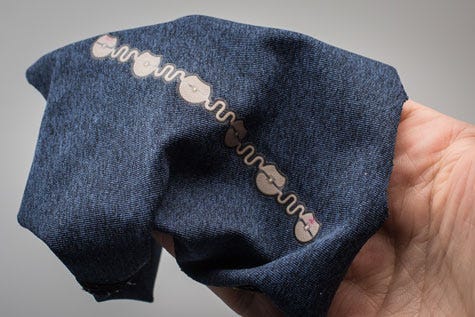How Smart Clothing Is Made—Advantages & Challenges
Van den Brand pointed out that while his team works on wearable devices as well as smart clothing, garments do offer advantages in certain cases.
September 16, 2016

Van den Brand pointed out that while his team works on wearable devices as well as smart clothing, garments do offer advantages in certain cases. "The big advantage of a garment is that it covers a large part of your body which also means that sensing . . . measures over a large part of the human body. If you want to measure a really high-quality ECG signal . . . you have access to the full front and back of the body. You can just choose the optimal size and location of the electrodes while with a wristband that's just not possible," Van den Brand said. He added, "If you want to monitor running, the way that people move their legs and the joints in their legs . . . you have to do that in clothing by integrating sensors into clothing." Two of the main challenges in developing smart clothing is ensuring the electronics still work after repeated washing and that the clothing isn't bulky or inflexible as a result of being "smart." Van den Brand explained, "The biggest challenge is washability . . . Clothing is known to degrade when you wash it multiple times. Electronics doesn't have a degradation mechanism. It works or it doesn't work. To make the electronics so reliable that it survives the washing machine--that's the number one challenge." He continued, "People accept electronics integrated into clothing, but they don't accept that it's bulky. To really make it have the mechanical properties of clothing, that's clearly the second challenge." |
|
[Image courtesy of IMEC & HOLST CENTRE]
Learn about "Tapping the Explosion of Offerings in Sensors" at the MD&M Minneapolis Conference, September 21-22. |
You May Also Like


.png?width=300&auto=webp&quality=80&disable=upscale)

